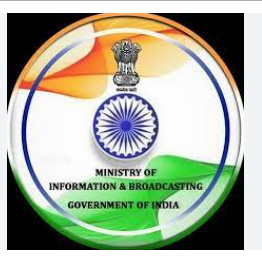Ministry of Information and Broadcasting
The Ministry of Information and Broadcasting (MIB) is a ministry of the Government of India responsible for the formulation and administration of rules, regulations, and laws related to information, broadcasting, the press, and films in India. The ministry is also responsible for the dissemination of information about government policies, schemes, and initiatives to the public through various media platforms.
History
The Ministry of Information and Broadcasting was established in 1947, shortly after India gained independence. The ministry has its roots in the Department of Information and Broadcasting, which was created in 1941 under the British Raj. Post-independence, the ministry played a crucial role in shaping India’s media landscape and promoting the country’s cultural heritage.
Organizational Structure
The MIB is headed by the Union Minister of Information and Broadcasting, who is assisted by a Minister of State. The administrative head of the ministry is the Secretary, who is supported by additional secretaries, joint secretaries, and other officials.
The ministry has several departments, autonomous bodies, and public sector undertakings under its jurisdiction, including:
- Directorate of Advertising and Visual Publicity (DAVP)
- All India Radio (AIR)
- Doordarshan (DD)
- Press Information Bureau (PIB)
- Central Board of Film Certification (CBFC)
- Film and Television Institute of India (FTII)
- Indian Institute of Mass Communication (IIMC)
- Prasar Bharati (Broadcasting Corporation of India)
Functions and Responsibilities
The primary functions and responsibilities of the Ministry of Information and Broadcasting include:
- Policy formulation: Developing and implementing policies related to information dissemination, broadcasting, the press, and films.
- Media regulation: Regulating content across various media platforms, including television, radio, and films, to ensure compliance with legal and ethical standards.
- Public service broadcasting: Overseeing the functioning of Prasar Bharati, which manages AIR and DD, to ensure the dissemination of unbiased and objective information to the public.
- Film promotion and certification: Promoting the growth of the Indian film industry and certifying films for public exhibition through the CBFC.
- Skill development: Providing training and skill development programs in the fields of journalism, mass communication, and film production through institutions like FTII and IIMC.
- International cooperation: Facilitating India’s participation in international forums related to media and broadcasting and promoting cultural exchange through films and other media.
Major Initiatives and Schemes
The MIB has launched several initiatives and schemes to promote the growth of the media and entertainment sector and ensure the dissemination of accurate and timely information to the public:
- Digital India: The ministry is actively involved in the Digital India initiative, which aims to transform India into a digitally empowered society and knowledge economy.
- Broadcasting Sector Reforms: The ministry has undertaken several reforms to increase transparency, reduce regulatory burden, and promote ease of doing business in the broadcasting sector.
- National Broadcasting Day: Celebrated on July 23 every year to commemorate the first-ever radio broadcast in India in 1927.
- National Film Heritage Mission: A project to digitize, restore, and preserve India’s cinematic heritage.
- Community Radio: The ministry promotes the growth of community radio stations to enhance pluralism and give voice to marginalized communities.
Challenges and Way Forward
The Ministry of Information and Broadcasting faces several challenges, including the need to balance freedom of expression with responsible media practices, adapt to the rapidly evolving digital landscape, and combat the spread of fake news and misinformation. The ministry must also focus on leveraging new technologies, fostering innovation, and collaborating with stakeholders to create a vibrant and inclusive media ecosystem.


